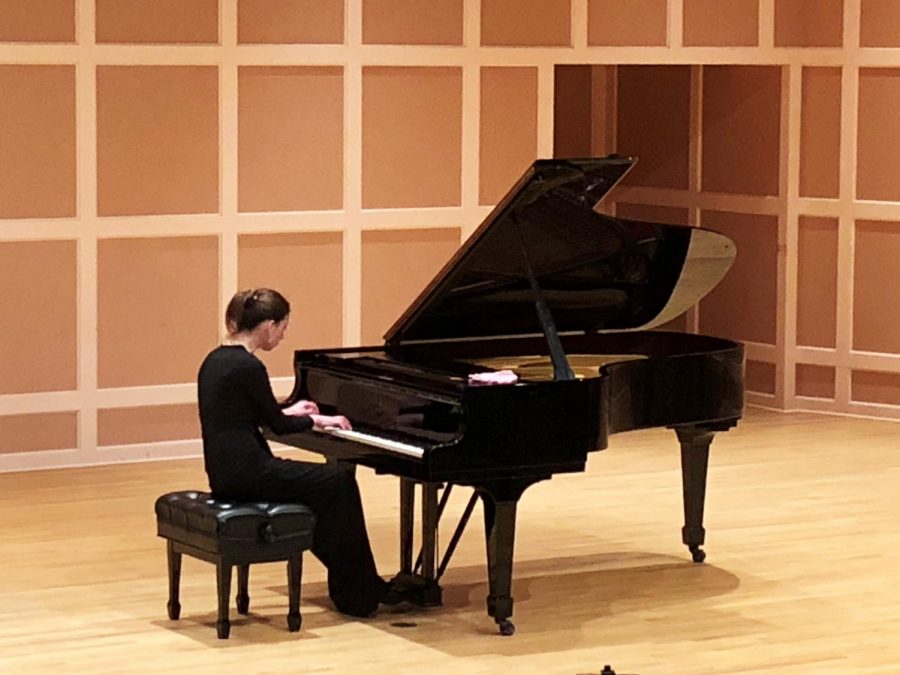A snippet of Russian history in Sundin
Pianist Anna Keiserman showcases music from her debut CD.
Anna Keiserman performs Sergei Rachmaninoff’s “Etudes-Tableaux op. 33” in Sundin Hall on April 9.
April 17, 2019
“The one thing that doesn’t change through the centuries, is that the composers are still starving.” This wisecrack sprung like spring from the mouth of Anna Keiserman, a New York-based pianist and native of Russia. Though Keiserman was far from home, the laughter that greeted her was hearty and familiar.
On Tuesday, April 9, Keiserman took Sundin Music Hall’s stage to share covers from her first CD, “Russian Mosaic,” released by the British record company Sheva Collection. Peppered with sonatas and etudes from throughout Keiserman’s homeland’s history, the Nov. 1, 2018 release aims to shed light on some of the more obscure compositions by songsmiths both dead and living. From millennial maestros to Soviet-era symphonists, the track listing on the album includes pieces by Sergei Rachmaninoff, Grigory Smirnov, Sergei Prokofiev, Rodion Shchedrin and Nikolai Medtner.
Clad in an elegant black dress, Keiserman showcased five pieces from four different composers during the 90-minute recital.
While this might seem like a miniscule number, the tunes greatly varied in length. Smirnov’s “Elegy” spanned less than five minutes, but Prokofiev’s “Sonata No. 8 in B Flat Major, op. 84” took up more than a third of the program’s run time. In between composers, Keiserman shared anecdotes of her connections to the songs and the inspirations the writers felt for their compositions, though she invited the audience to interpret personal meanings for the songs through their own emotions.
Rachmaninoff’s “Etudes-Tableaux op. 33” was the opening number and one of the longer ones. This 26-minute series of etudes took attendees on a roller coaster journey. While at first Keiserman’s fingers danced airily across the ivories, invoking images of springtime, the etude’s mood quickly darkened substantially. The legato notes and minor keys that followed were reminiscent to the foreboding air of a spy slinking down a dimly lit hallway- perhaps a fitting metaphor for the unwelcome return of frosty weather after weeks of sunnier skies over St. Paul. Her performance of Shchedrin’s “Troika,” which translates to “sleigh ride,” also served as a reminder that winter never truly says goodbye to Russia- or Minnesota.
Despite “Russian Mosaic” being Keiserman’s first full-length release, she already boasts an exhaustive resume. A recent PhD graduate, her collection of diplomas come from the Gnessin Russian Academy of Music, New Jersey’s Rutgers University and, right in our backyard, the University of Minnesota.
If you missed the chance to see this virtuosa while she was in town, do not fret—when you look at Sundin Hall’s web page, you can see that they are still due to host a litany of concerts, from classical to ragtime, before it is time to say “proschay” to Hamline for the summer.

